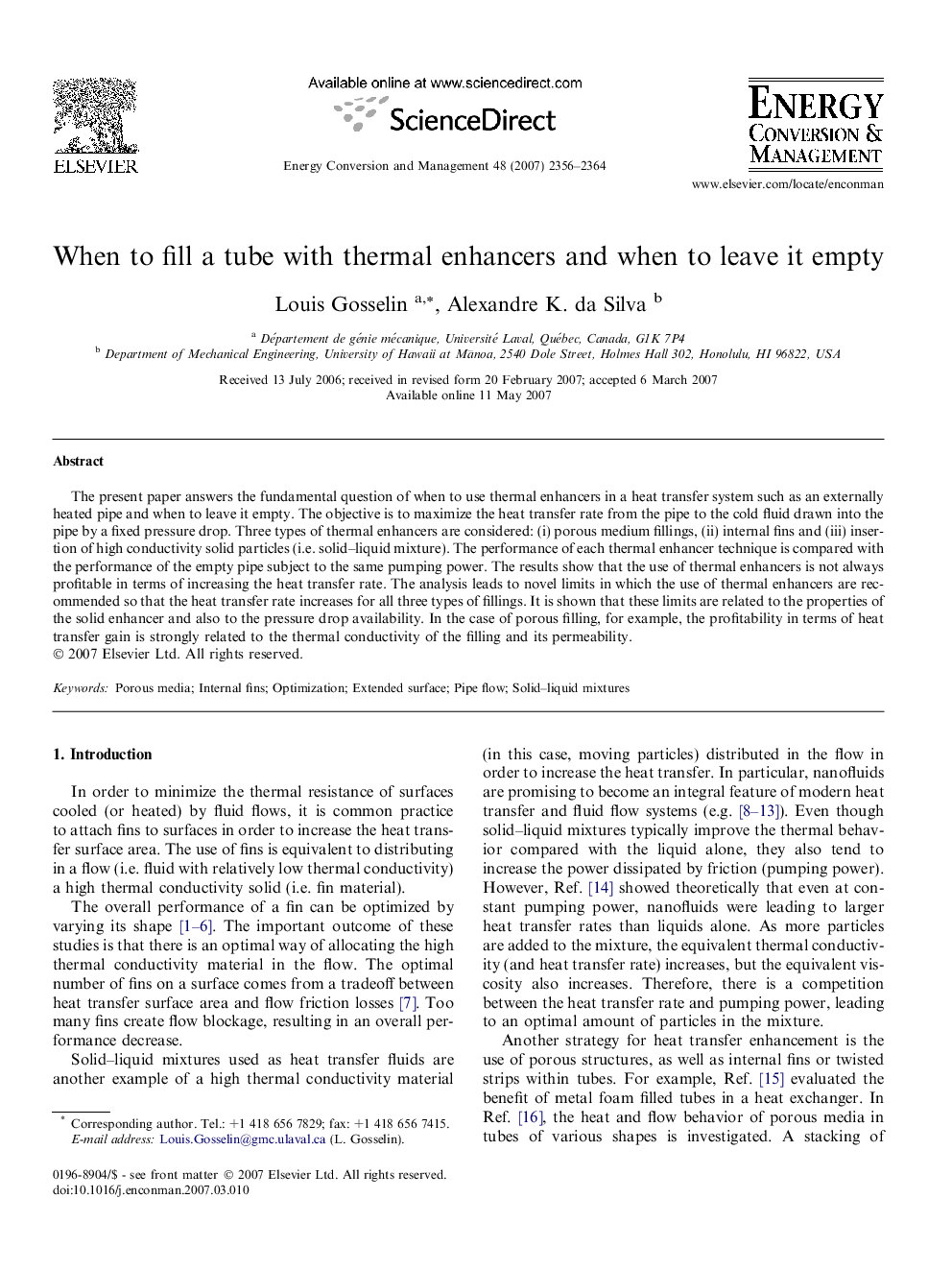| Article ID | Journal | Published Year | Pages | File Type |
|---|---|---|---|---|
| 762187 | Energy Conversion and Management | 2007 | 9 Pages |
The present paper answers the fundamental question of when to use thermal enhancers in a heat transfer system such as an externally heated pipe and when to leave it empty. The objective is to maximize the heat transfer rate from the pipe to the cold fluid drawn into the pipe by a fixed pressure drop. Three types of thermal enhancers are considered: (i) porous medium fillings, (ii) internal fins and (iii) insertion of high conductivity solid particles (i.e. solid–liquid mixture). The performance of each thermal enhancer technique is compared with the performance of the empty pipe subject to the same pumping power. The results show that the use of thermal enhancers is not always profitable in terms of increasing the heat transfer rate. The analysis leads to novel limits in which the use of thermal enhancers are recommended so that the heat transfer rate increases for all three types of fillings. It is shown that these limits are related to the properties of the solid enhancer and also to the pressure drop availability. In the case of porous filling, for example, the profitability in terms of heat transfer gain is strongly related to the thermal conductivity of the filling and its permeability.
